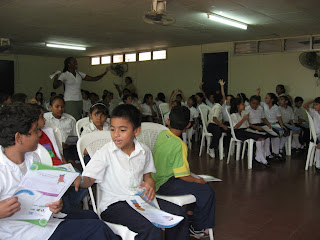Ya Llegamos! we are here!
Update from the field from F2F volunteers Valerie Malzacher and Felice Maciejewski... Valerie and I arrived in Santo Domingo. Our trip went well. We met up in Miami, our flight was on time and our luggage arrived. Rafael and his lovely wife, Sofia, picked us up at the airport. We saw many interesting things along the way. Hurrican Sandy has stirred up the Caribbean. The water which is usually a beautiful blue, now looks like the Big Muddy. Waves crashed along the Malecon. Lots of palm trees and other vegetation such as bougainvilia. It is Sunday, so there are lots of folks out spending time with their families near el caribe. We both have been up since early, early this morning. Off to find some dinner and then to bed early. Tomorrow, bright and early, we head for our assignment, Universidad ISA in Santiago. About a 2.5 hour drive. Nos vemos!





